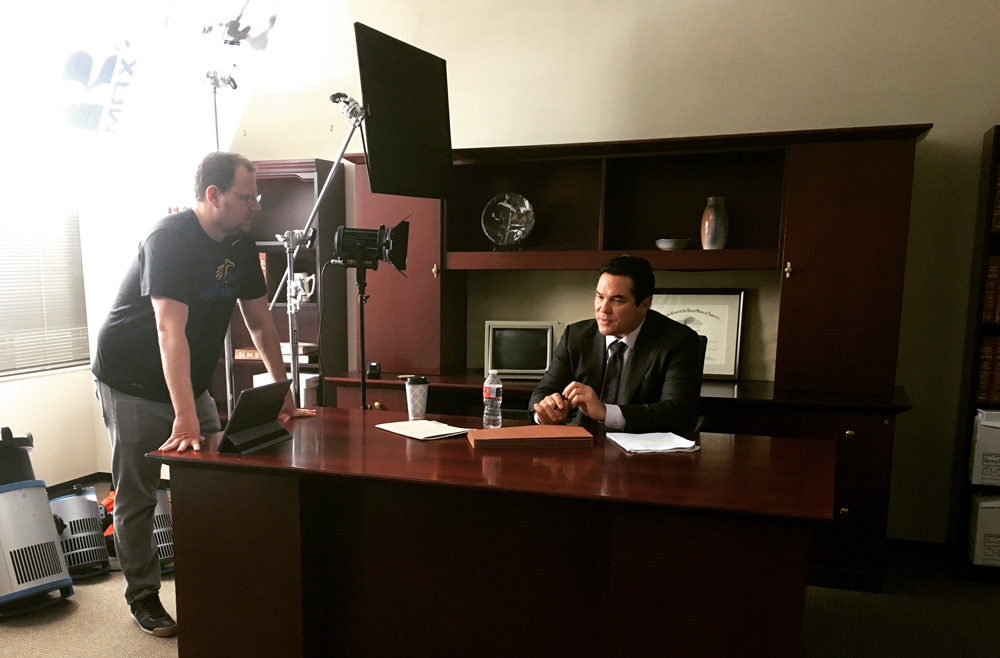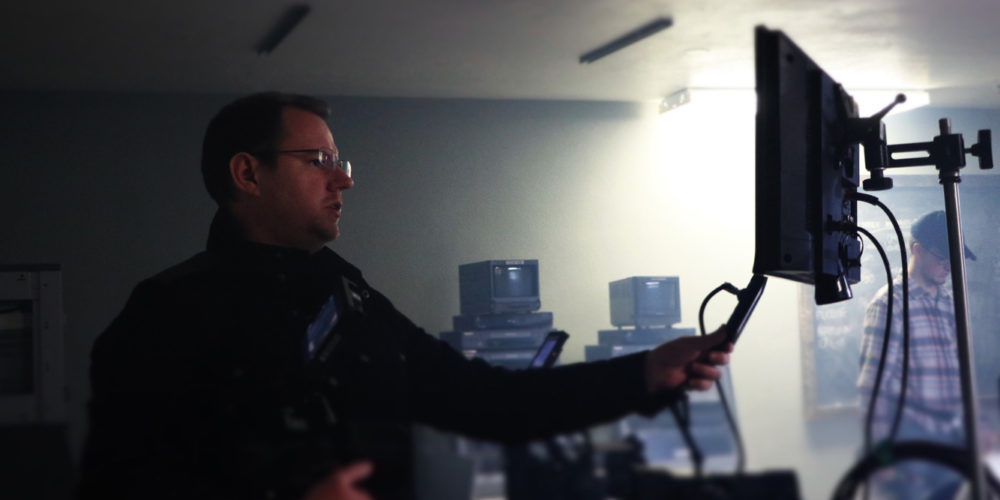When Nathan VonMinden (’05) was growing up, he spent so much time watching movies in his hometown of Brenham, Texas, that his family worked out a special system for getting him home. If they received a collect call from him, they knew not to accept the charges — and instead to hang up, get in the car and go pick him up at the movie theater.
“Film was just one of those things that I loved when I was a kid,” VonMinden says. “I always wanted to figure out what exactly it was in a film that made it good, and I just loved dissecting and talking about movies. I was always at the movie theater.”
In high school, when not watching movies, VonMinden concentrated on math and science. After graduating, he studied aerospace engineering at Embry-Riddle — first at the Prescott Campus in Arizona, and then in Daytona Beach, Florida, where he moved so he and his wife, Meleice, could enjoy the beach, and she could be close to educational opportunities of her own.
VonMinden earned his bachelor’s degree in 2005, and he started working as a production engineer at Homac Manufacturing Company in nearby Ormond Beach.
Merging Passion And Skill
VonMinden’s passion for film, however, continued to grow. Videos he had made for church groups he belonged to were well received, and more video production projects came his way. What started as a hobby soon evolved into a second job, and then a career.
His engineering skills proved to be an asset.
Like engineering, filmmaking is about “having a vision for reality and trying to solve it into existence,” he says, “taking disparate pieces and trying to make them into one thing.”
“I’m putting my engineering education to full use,” VonMinden adds. “Both engineering and filmmaking are about communication, collaboration and problem solving, all things that I learned at Embry-Riddle.”

with The Challenger Disaster.
The Big Screen
With hundreds of small films and productions to his name, VonMinden moved into the world of feature films in 2019 with The Challenger Disaster. The film debuted in January at 12 cinemas nationwide and became available on iTunes, Amazon and other online video outlets. VonMinden recently partnered with a distributor, and DVDs of the film are now on sale at Walmart stores across the country. “Getting into Walmart was a big deal for us,” he says.
The movie tells the story of Roger Boisjoly, an engineer who tried to stop the launch of the ill-fated Space Shuttle Challenger in 1986 and his post-disaster whistleblowing, which subsequently ended his engineering career.
VonMinden says he learned as a student at Embry-Riddle that engineers had tried to prevent the disaster. “[That fact] lodged somewhere deep in my brain, and it became like a perpetual itch that I kept scratching and scratching.”
Starting in 2011, he began researching the tragic mishap and studying the Rogers Commission Report, which was based on the work of a presidential commission that investigated what had occurred. About two and a half years ago, he began writing the screenplay.

Engineering Ethics
VonMinden says he was fascinated with the intersection of engineering and ethics that Boisjoly’s story represented, and with the engineer’s courage to speak truth to those in power.
“Everything that’s made comes into existence because of an engineer,” VonMinden says. “The thing is, you have to remember the person who is going to use whatever you’re going to make. You have to prove that it works so you don’t violate the public trust.”
VonMinden quit his day job as a production director at Grace Point Church in San Antonio to make the film. He acknowledges that, despite his operating an agency that provides marketing and production for outside clients and supports his film projects, the pressure has been intense.
“That’s the sacrifice, though, that my wife and I were willing to make,” he says, “so that the engineers who were incredibly brave, who stood up for what was right could be honored in our culture.”
